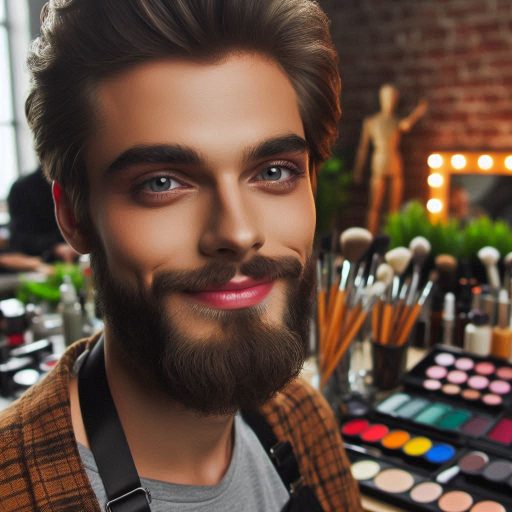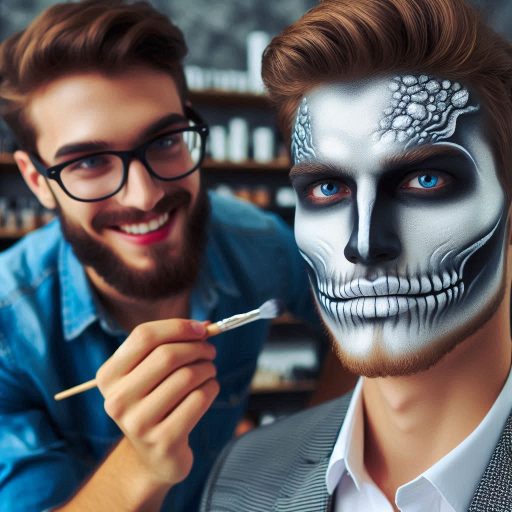Introduction
Special effects (SFX) have revolutionized the film industry, transforming storytelling and visual experiences.
SFX refers to various techniques used to create illusions on screen.
They include both practical effects, like animatronics, and digital effects, like CGI.
Over time, SFX has evolved dramatically, driven by technological advancements.
In the early days of cinema, SFX relied heavily on practical methods.
Techniques such as miniatures and matte paintings were common.
As technology progressed, digital effects began to play a more significant role.
Today, SFX blends traditional and digital methods to create breathtaking visuals.
The importance of SFX in modern cinema cannot be overstated.
They enhance storytelling by visualizing elements that are impossible to film otherwise.
For instance, a sci-fi movie can depict futuristic worlds that engage viewers.
Similarly, fantasy films can bring mythical creatures and magical environments to life.
SFX also significantly boost the visual appeal of movies.
They can make action scenes more dynamic and engaging.
Stunning visuals captivate audiences, making the cinematic experience more immersive.
Additionally, innovative SFX can create memorable moments that define a film.
In summary, SFX is a critical component of modern filmmaking.
It not only supports storytelling but also enhances the overall visual experience.
As technology continues to advance, SFX will undoubtedly keep pushing the boundaries of cinematic creativity.
Evolution of SFX in cinema
Historical overview of SFX techniques in early cinema
Special effects (SFX) have significantly evolved in cinema, transforming from basic techniques to highly sophisticated visuals.
Transform Your Career Today
Unlock a personalized career strategy that drives real results. Get tailored advice and a roadmap designed just for you.
Start NowEarly cinema used practical effects, like miniatures and in-camera tricks, to create illusions.
Silent films, like “A Trip to the Moon” (1902), showcased early SFX techniques such as stop-motion animation and simple optical illusions.
In the early 20th century, filmmakers relied on physical effects and rudimentary tools.
Classic films like “King Kong” (1933) used stop-motion animation to bring creatures to life.
These methods required meticulous planning and execution but were groundbreaking at the time.
Advancements in technology leading to more realistic effects
The 1960s and 1970s saw significant advancements.
Innovations such as rear projection and matte paintings allowed filmmakers to create more complex environments.
Techniques from this era, like those seen in “2001: A Space Odyssey” (1968), set new standards for visual storytelling.
The 1990s marked a major turning point with the advent of computer-generated imagery (CGI).
Films like “Jurassic Park” (1993) showcased CGI’s potential to create realistic dinosaurs and complex effects.
This technology revolutionized the industry, allowing for more dynamic and imaginative visuals.
Today, SFX continues to advance with cutting-edge technology.
Digital effects and 3D modeling provide filmmakers with unprecedented control and realism.
Films like “Avatar” (2009) demonstrate the capabilities of modern SFX, blending live-action with CGI seamlessly.
In fact, the evolution of SFX in cinema reflects a continuous quest for realism and innovation.
From early practical effects to advanced digital techniques, each advancement has shaped the way stories are told on screen.
Read: Beginner’s Guide to SFX Makeup and Prosthetics
Practical effects vs. digital effects
When it comes to creating special effects in modern cinema, filmmakers have two main options: practical effects and digital effects.
These techniques each have their own strengths and limitations, leading to a diverse range of visual storytelling possibilities.
Distinction between practical effects and digital effects
- Practical effects: Practical effects involve the use of physical props, makeup, animatronics, and other tangible elements to create visual effects on set.
These effects are often achieved through the manipulation of real-world objects and materials, requiring skilled artisans and technicians to bring fantastical worlds to life. - Digital effects: Digital effects, on the other hand, rely on computer-generated imagery (CGI) to enhance or create visual effects in post-production.
This technology allows filmmakers to create elaborate and fantastical scenes that would be impossible or impractical to achieve with practical effects alone.
Examples of iconic films utilizing each type of effect
- Practical effects: One of the most famous examples of practical effects in cinema is the original “Star Wars” trilogy, where iconic creatures like Yoda and the Wampa were brought to life through puppetry and animatronics.
- Digital effects: On the digital effects front, the “Lord of the Rings” trilogy stands out for its groundbreaking use of CGI to create massive battles, fantastical creatures, and breathtaking landscapes in the world of Middle-earth.
Overall, the choice between practical effects and digital effects often depends on the specific needs of the film and the vision of the director.
Transform Your Career Today
Unlock a personalized career strategy that drives real results. Get tailored advice and a roadmap designed just for you.
Start NowWhile practical effects can provide a sense of tangibility and authenticity to the on-screen visuals, digital effects offer a level of flexibility and creative freedom that can push the boundaries of imagination in modern cinema.
Read: Freelancing vs. Studio Jobs for SFX Artists
Incorporating SFX seamlessly into storytelling
When it comes to modern cinema, innovative special effects (SFX) techniques play a crucial role in captivating audiences and enhancing the overall visual experience.
From creating realistic explosions to breathtaking CGI landscapes, SFX have the power to transport viewers to new worlds and immerse them in the story being told.
In this section, we will explore how filmmakers incorporate SFX seamlessly into storytelling, while also balancing them with practical filmmaking techniques for a cohesive visual aesthetic.
How SFX can enhance character development and plot progression
SFX can enhance character development by visually representing internal emotions or conflicts.
For example, using CGI to show a character’s transformation or inner struggles.
These visual cues help to deepen the audience’s understanding of the character’s journey.
SFX can also be used to advance the plot by creating visually stunning set pieces.
For instance, a high-octane action sequence that keeps audiences on the edge of their seats.
By seamlessly integrating SFX into the narrative, filmmakers can create a more immersive experience.
Balancing SFX with practical filmmaking techniques
While SFX can add a layer of visual spectacle, it’s essential to balance them with practical effects.
Practical effects, such as physical props or makeup, can enhance the authenticity of a scene.
Combining SFX with practical techniques can create a more believable and engaging visual aesthetic.
For example, using SFX to enhance a practical explosion or makeup effects for a creature design.
By blending these techniques seamlessly, filmmakers can create a cohesive visual world that feels both realistic and fantastical.
Ultimately, the key is to find a balance between SFX and practical filmmaking techniques to create a visually stunning and emotionally resonant cinematic experience.
Seamlessly incorporate SFX into storytelling for a compelling experience.
Balance SFX with practical filmmaking techniques for visual impact.
Create an immersive cinematic experience through effective integration.
Transform Your Career Today
Unlock a personalized career strategy that drives real results. Get tailored advice and a roadmap designed just for you.
Start NowFilmmakers use SFX to enhance characters and plot.
They transport audiences to exciting new worlds.
SFX maintains a cohesive visual aesthetic. It feels both realistic and fantastical.
It’s this careful balance between innovation and tradition that continues to push the boundaries of modern cinema and captivate audiences around the world.
Read: Day in the Life of a Special Effects Makeup Artist

Cutting-edge SFX techniques in modern cinema
In the dynamic world of cinema, special effects (SFX) play a crucial role in bringing imagination to life on the big screen.
Modern filmmakers are constantly pushing the boundaries of SFX technology to create visually stunning and immersive experiences for audiences.
Recent Innovations in SFX Technology
Advancements in technology have revolutionized the way SFX are incorporated into films.
Here are some of the cutting-edge techniques that have been making waves in modern cinema:
- Virtual Production: The use of LED walls and real-time rendering allows filmmakers to create realistic and immersive environments without the need for traditional green screens.
- Deep Learning Algorithms: AI-driven software is being used to streamline the process of creating digital effects, making it easier to generate complex and realistic visuals.
- Virtual Reality and Augmented Reality: Filmmakers are experimenting with VR and AR technologies to enhance the storytelling experience and create interactive SFX elements.
- Holographic Displays: The use of holographic displays adds a new dimension to visual effects, allowing for stunning 3D projections that captivate audiences.
Groundbreaking Films Pushing the Boundaries
Several recent films have demonstrated the incredible potential of SFX technology to create immersive and visually striking worlds.
Here are some examples of groundbreaking films that have pushed the boundaries of visual effects:
- Avatar (2009): Directed by James Cameron, “Avatar” showcased groundbreaking CGI technology and motion capture techniques to bring the alien world of Pandora to life.
- Gravity (2013): Alfonso Cuarón’s “Gravity” used innovative techniques like light boxes and 3D tracking to create a realistic portrayal of space.
- Interstellar (2014): Christopher Nolan’s “Interstellar” utilized practical effects and a blend of CGI to create stunning visuals of space travel and wormholes.
- Blade Runner 2049 (2017): Denis Villeneuve’s sequel to the iconic sci-fi film featured intricate visual effects that seamlessly blended with practical sets.
- Ready Player One (2018): Steven Spielberg’s adaptation of the popular novel incorporated a mix of CGI and live-action elements to create a visually immersive virtual world.
In general, the use of innovative SFX techniques in modern cinema continues to evolve, allowing filmmakers to push the boundaries of visual storytelling.
With advancements in technology and a creative approach to SFX, the possibilities for creating captivating and immersive cinematic experiences are endless.
Read: Famous SFX Artists You Should Know About
Impact of SFX on audience experience
Special Effects (SFX) play a crucial role in shaping the audience’s experience while watching a film.
Through innovative techniques and advancements in technology, filmmakers are able to create stunning visual spectacles that captivate and immerse viewers in the world of the film.
Immersing viewers in the world of the film
One of the key impacts of SFX on audience experience is the ability to create a sense of immersion in the film’s fictional world.
By using visual effects to bring fantasy elements to life, filmmakers can transport viewers to otherworldly realms and make them believe in the impossible.
For example, movies like “Avatar” and “Inception” use groundbreaking SFX techniques to create immersive and visually stunning worlds that draw audiences in and make them feel like they are part of the action.
3D technology and CGI bring detailed, realistic visuals to films.
Transform Your Career Today
Unlock a personalized career strategy that drives real results. Get tailored advice and a roadmap designed just for you.
Start NowThey enhance the viewing experience and make worlds feel alive.
Influence on audience expectations for visual spectacle
SFX also have a significant impact on audience expectations for visual spectacle in modern cinema.
Audiences now expect more visually stunning effects on screen.
Filmmakers continually raise the bar with elaborate visuals.
Expectations for bigger, more impressive effects increase regularly.
For example, the success of films like “The Avengers” and “Mad Max: Fury Road” has raised the standard for what is considered visually impressive in terms of action and special effects.
Audiences demand thrilling action scenes and flawless effects.
They expect digital and practical effects to blend seamlessly.
They crave visuals that push filmmaking boundaries.
In review, the impact of SFX on audience experience is undeniable.
Special effects transport viewers to fantastical worlds.
They set new standards for visual spectacle.
Filmmakers use them to create unforgettable experiences.
These effects leave a lasting impression on audiences.
Collaboration between filmmakers and SFX artists
Importance of communication and teamwork in creating effective SFX
Communication and teamwork between filmmakers and SFX artists are essential for creating stunning visual effects.
Clear communication ensures that the vision of the director is translated accurately into the final product.
SFX artists work closely with the director to understand the creative vision and bring it to life through their expertise.
Regular meetings and discussions help in aligning everyone’s ideas and expectations, resulting in a cohesive and impactful SFX.
Case studies of successful collaborations between directors and SFX teams
Christopher Nolan and Paul Franklin (Inception)
The collaboration between Christopher Nolan and Paul Franklin in “Inception” allowed for the seamless integration of practical effects and CGI.
The rotating hallway scene, for example, was a perfect blend of practical set design and CGI enhancements.
Transform Your Career Today
Unlock a personalized career strategy that drives real results. Get tailored advice and a roadmap designed just for you.
Start NowTheir collaboration resulted in visually stunning and innovative SFX that wowed audiences worldwide.
George Miller and Lesley Vanderwalt (Mad Max: Fury Road)
George Miller’s collaboration with SFX makeup artist Lesley Vanderwalt in “Mad Max: Fury Road” led to the creation of iconic characters like Immortan Joe and Furiosa.
Vanderwalt’s expertise in prosthetics and makeup combined with Miller’s vision helped in achieving the gritty, post-apocalyptic look of the film.
The collaboration between the director and SFX artist elevated the film’s visual appeal and set a new standard for practical effects in modern cinema.
James Cameron and Joe Letteri (Avatar)
The partnership between James Cameron and SFX supervisor Joe Letteri in “Avatar” revolutionized the world of visual effects.
The film’s groundbreaking use of motion capture technology and CGI set a new benchmark for SFX in cinema.
Cameron and Letteri’s collaboration resulted in a visually immersive experience that transported audiences to the alien world of Pandora.
Their teamwork and dedication to pushing the boundaries of SFX paved the way for future innovations in the industry.
Peter Jackson and Richard Taylor (The Lord of the Rings trilogy)
Peter Jackson’s collaboration with SFX artist Richard Taylor in “The Lord of the Rings” trilogy showcased the power of practical effects and miniatures in creating a fantasy world.
Taylor’s intricate designs and attention to detail brought Middle-earth to life in a way that CGI alone couldn’t achieve.
The seamless integration of practical effects with digital enhancements enhanced the film’s authenticity and immersive quality.
Jackson and Taylor’s partnership exemplifies the importance of teamwork and collaboration in achieving SFX excellence.
In a nutshell, successful collaborations between filmmakers and SFX artists are crucial in pushing the boundaries of visual effects in modern cinema.
Directors and SFX teams foster open communication and mutual respect.
They share a creative vision to enhance the cinematic experience.
This collaboration creates impactful and memorable SFX for global audiences.
Trends in SFX in different genres of cinema
When it comes to special effects (SFX) in cinema, different genres present unique challenges and opportunities for filmmakers.
The use of SFX in action movies, horror films, sci-fi flicks, and other genres can greatly impact the storytelling and overall audience experience.
Action Films
In action films, SFX are often used to bring high-octane sequences to life.
Explosions, car chases, and fight scenes are all staples of the genre that rely heavily on visual effects to create excitement and intensity.
Transform Your Career Today
Unlock a personalized career strategy that drives real results. Get tailored advice and a roadmap designed just for you.
Start NowMovies like “Mad Max: Fury Road” and “The Avengers” demonstrate how SFX can elevate action sequences to new heights, immersing audiences in thrilling on-screen adventures.
Horror Films
In horror films, SFX play a crucial role in building tension and fear.
Creature effects, gore, and atmospheric enhancements are commonly used to elicit a visceral reaction from viewers.
Films like “The Exorcist” and “The Thing” are known for their groundbreaking use of SFX to create nightmarish visuals that stick with audiences long after the credits roll.
Sci-Fi Films
Sci-fi films often rely on SFX to transport audiences to otherworldly realms and futuristic landscapes.
From alien creatures to interstellar spacecraft, the possibilities for visual effects in sci-fi are endless.
Movies like “Blade Runner 2049” and “Interstellar” showcase how SFX can be used to push the boundaries of imagination, creating visually stunning worlds that captivate viewers.
Other Genres
While action, horror, and sci-fi are some of the most common genres where SFX are prominently featured, other genres also benefit from the use of visual effects.
Comedies, dramas, and even animated films utilize SFX to enhance storytelling and create captivating visuals.
For example, films like “The Grand Budapest Hotel” and “Coco” showcase how SFX can be seamlessly integrated into various genres to enhance the overall cinematic experience.
Basically, the use of SFX in cinema is a dynamic and ever-evolving aspect of filmmaking.
Different genres present unique opportunities for filmmakers to utilize visual effects in creative and innovative ways, enhancing storytelling and captivating audiences.
Exploring SFX trends across genres helps filmmakers push boundaries.
They create memorable, immersive cinematic experiences for global audiences.
Conclusion
Special effects (SFX) play a crucial role in enhancing the visual experience of modern cinema.
They create a sense of realism and excitement, drawing audiences into the story being told on screen.
Moreover, SFX technology continues to evolve, opening up new possibilities for innovation in storytelling.
As filmmakers push the boundaries of what is possible with SFX, audiences can expect even more immersive experiences in the future.
From CGI to practical effects, SFX will continue to shape the way stories are told on the big screen.
Ultimately, SFX is not just about creating eye-catching visuals, but also about enriching the narrative and emotional impact of a film.
Transform Your Career Today
Unlock a personalized career strategy that drives real results. Get tailored advice and a roadmap designed just for you.
Start NowAs technology advances, the future of SFX holds endless possibilities for creative storytelling applications.
From augmented reality to virtual reality, SFX will continue to revolutionize the way films are made and experienced.
The significance of SFX in modern cinema cannot be overstated, and its potential for innovation is limitless.
As filmmakers continue to explore new techniques and technologies, the future of SFX is bright and exciting.




